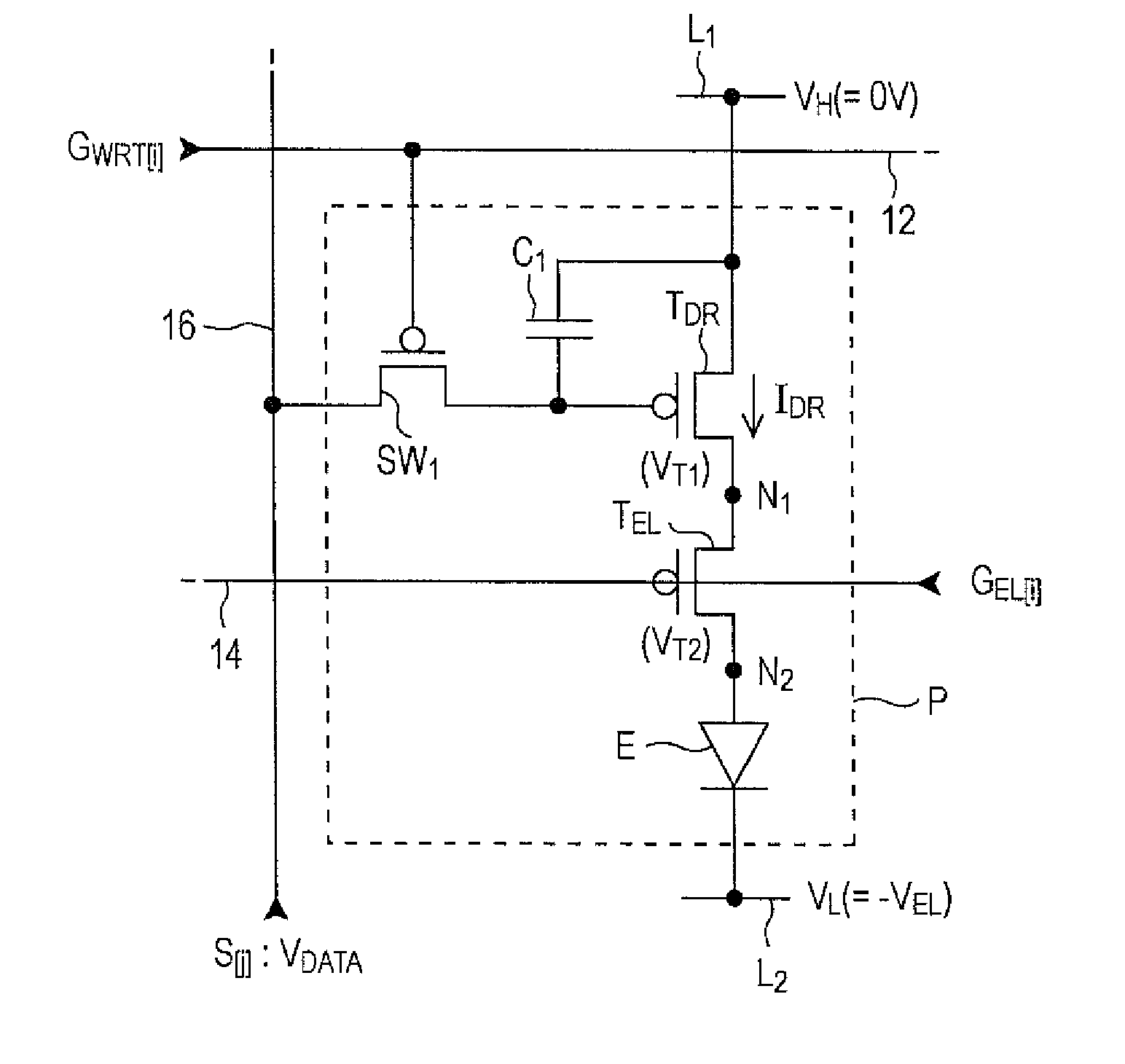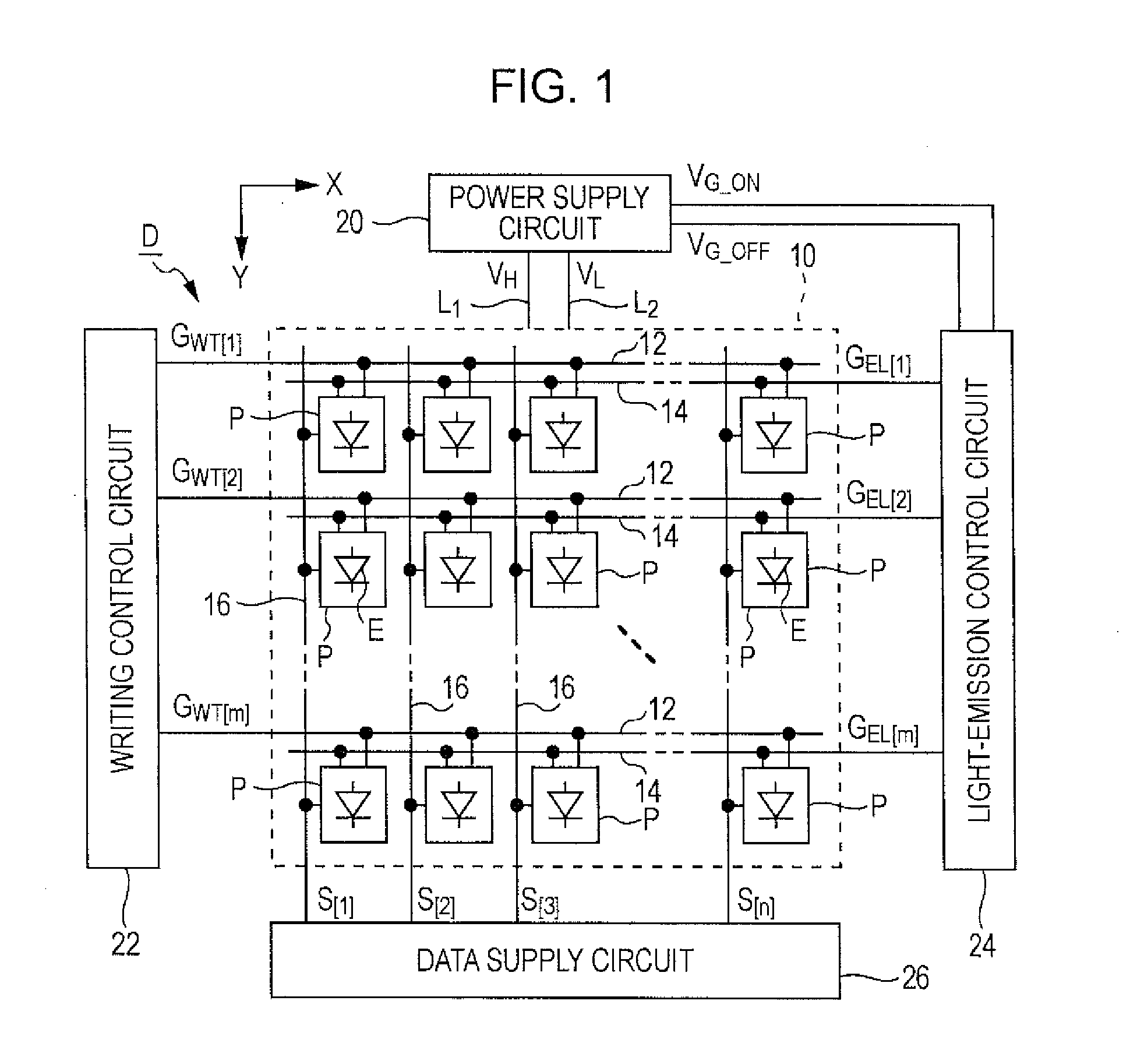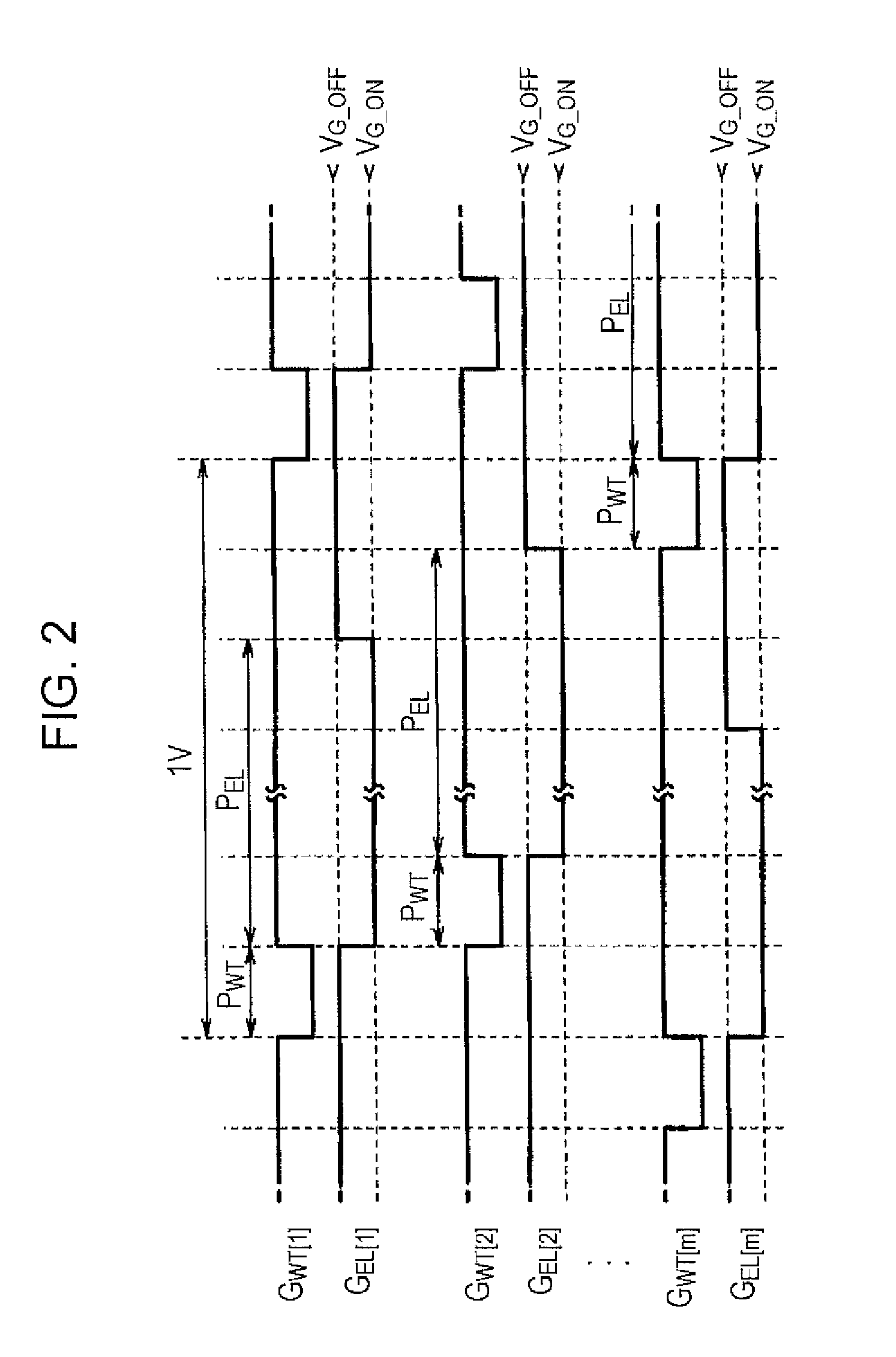Light emitting device, method of driving pixel circuit, and driving circuit
a technology of light emitting devices and circuits, applied in the direction of instruments, light sources, electroluminescent light sources, etc., to achieve the effect of reducing the influence of electrical characteristics
- Summary
- Abstract
- Description
- Claims
- Application Information
AI Technical Summary
Benefits of technology
Problems solved by technology
Method used
Image
Examples
first embodiment
[0038]FIG. 1 is a block diagram of a light emitting device for use as an image display unit in various electronic apparatuses. A light emitting device D according to a first embodiment of the invention includes an element array 10 and peripheral circuits (i.e., a power supply circuit 20, a writing control circuit 22, a light-emission control circuit 24, and a data supply circuit 26). The element array 10 includes many pixel circuits P. The peripheral circuits control the pixel circuits P. Each pixel circuit P includes a light emitting element E which emits light by receiving a current.
[0039]In the element array 10, m selection lines 12 extending in the X direction, m light-emission control lines 14 extending in the X direction, and n data lines 16 extending in the Y direction that is perpendicular to the X direction (each of m and n is a natural number of two or more). Each light-emission control line 14 pairs with the corresponding selection line 12. Each pixel circuit P is arrange...
second embodiment
[0065]A second embodiment of the invention will now be described. Components having the same functions and operations as those of the components in the first embodiment are designated by the same reference numerals and a detail description thereof is omitted.
[0066]FIG. 8 is a circuit diagram of the structure of a pixel circuit P in the second embodiment. As shown in FIG. 8, transistors (e.g., a driving transistor TDR, a light-emission control transistor TEL, and a transistor SW1) constituting the pixel circuit P are of N-channel type. Therefore, the relationship among power supply lines L1 and L2 and components of the pixel circuit P is the reverse of that in the first embodiment. In other words, the anode of a light emitting element E is connected to the power supply line L1 and the source of the driving transistor TDR is connected to the power supply line L2. The potential VL of the power supply line L2 is a reference potential (0 V) for the voltages across respective components. ...
third embodiment
[0076]FIG. 10 is a circuit diagram of the structure of a pixel circuit P according to a third embodiment of the invention. Referring to FIG. 10, the pixel circuit P according to this embodiment includes a transistor SW2 and a capacitor C2 in addition to the same components as those in the first embodiment. The transistor SW2 is a P-channel transistor, arranged between the gate and the drain of a driving transistor TDR, for controlling the electrical connection between the gate and the drain. A control signal GCP[i] is supplied from a driving circuit (not shown) to the gate of the transistor SW2 via a control line 18. The capacitor C2 includes an electrode E1 and an electrode E2. The electrode E1 is connected to the gate of the driving transistor TDR. The transistor SW2, arranged between the electrode E2 and a data line 16, controls the electrical connection therebetween.
[0077]FIG. 11 is a timing chart showing the waveforms of signals supplied to the pixel circuit P at the intersecti...
PUM
 Login to View More
Login to View More Abstract
Description
Claims
Application Information
 Login to View More
Login to View More - R&D
- Intellectual Property
- Life Sciences
- Materials
- Tech Scout
- Unparalleled Data Quality
- Higher Quality Content
- 60% Fewer Hallucinations
Browse by: Latest US Patents, China's latest patents, Technical Efficacy Thesaurus, Application Domain, Technology Topic, Popular Technical Reports.
© 2025 PatSnap. All rights reserved.Legal|Privacy policy|Modern Slavery Act Transparency Statement|Sitemap|About US| Contact US: help@patsnap.com



